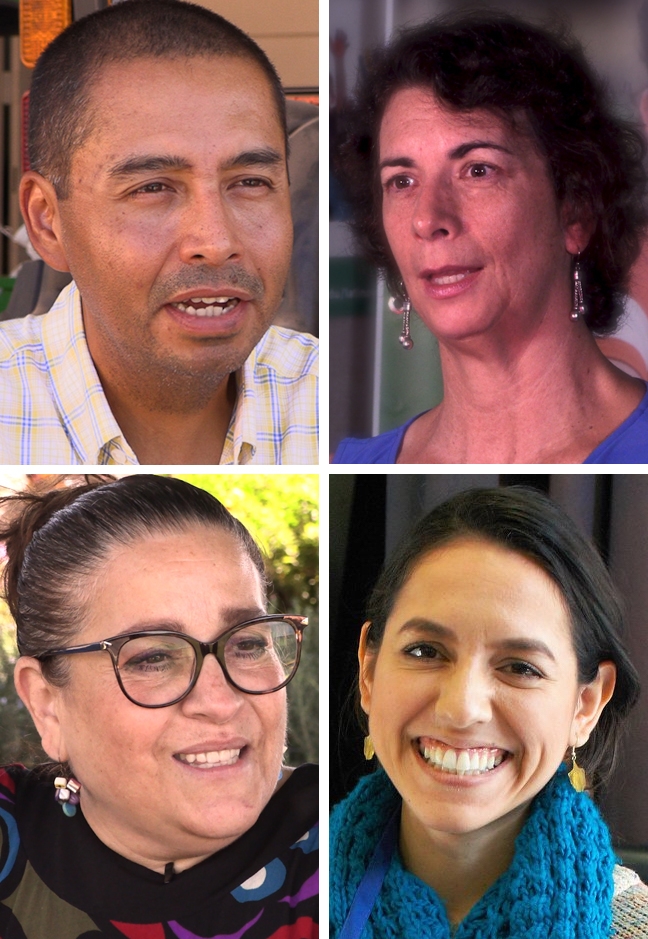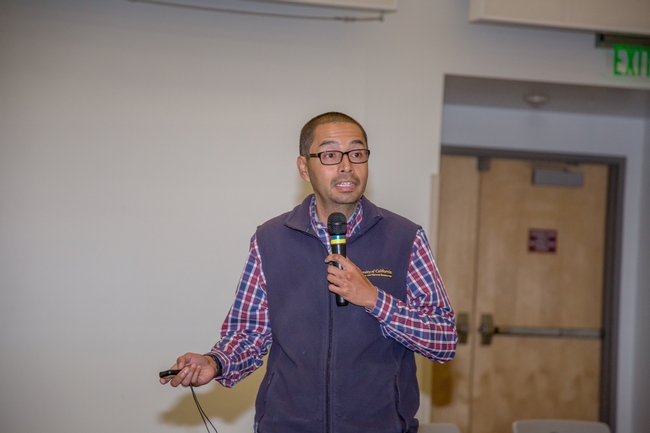- Author: Ricardo A. Vela
The UC Agriculture and Natural Resources (UC ANR) Desert Research and Extension Center (DREC) is in the heart of the Imperial Valley, surrounded by green fields, feedlots, busy farmers and a growing urban community. Jairo Diaz, a Colombian native, is the director of the center, and he proudly talks about its importance.
"This valley is one of the most amazing ag valleys that we have in the (United) States. We are one of the top valleys in agriculture. We have diverse agriculture here, from being the salad bowl of vegetables in the winter along with Yuma, Ariz., to forage all year round for the feedlots," Diaz said.
Diaz is the Hispanic academic with the highest rank in UC ANR, and he oversees all the research and outreach programs conducted there.
Last fiscal year, the center conducted 42 projects in the following areas: plant breeding and variety trials (13), irrigation and fertilizer management (8), forage and agronomic crops (6), vegetable disease management (3), environmental studies (2), food safety (1), weed management (1), livestock (1), and outreach and educational programs (7). Lead academics are from the University of California system (UC ANR, UC Davis, UC Riverside), the U.S. Department of Agriculture and Canada. Research at the center tackles a diversity issues in Imperial County's top 10 agricultural and livestock commodities.
"We have over 40 different projects, including research to improve vegetable production, irrigation practices, management of cattle in the feedlots, nutrition and so on. All that impacts our communities because all this research is connected to the industry and the growers. So, we have a direct connection with our stakeholders daily," Diaz said.
This year has not been easy for DREC; COVID-19 forced them to implement drastic measures to ensure the safety of the staff and the communities they serve.
"We scaled down our field and laboratory research and implemented research plans with researchers and leadership to move forward critical research during this global pandemic time. We also implemented safety plans for on-site staff performing daily infrastructure and maintenance of critical activities," stated Diaz.
Once those safety measures were in place, they have been busier than ever, supporting more than 40 research projects and providing maintenance to more than 70,000 square feet of facilities. During the spring, under the supervision of Gilberto Magallon, the center's superintendent, they harvested to collect research data in small grains, vegetables, sugar beets, melons and corn. At the same time, forage and cattle studies are ongoing. Diaz acknowledges the staff's exceptional work and the investigators who, far from being stopped by the pandemic, manage to conduct their research remotely.
One of the jewels of the center is the Farm Smart outreach and educational program.
"This program is top-rated and successful. It focuses on major issues occurring in our local communities, including access to high-quality education and food, healthy habits and higher education pathways," Diaz said.
Farm Smart, supervised by community education specialists Stacey Amparan and Stephanie Collins, engaged 7,253 participants in community activities and presentations. Before the pandemic outbreak, DREC hosted extension field days, commodity board meetings, and workshops where growers, ranchers, industry and academics could discuss and share knowledge about current research activities at the center and within the California low desert region.
Diaz notes that the Farm Smart programs are tailored to everyone's needs, from toddlers to seniors citizens.
While the center quietly sees another hot summer pass by and waits for things to get back to normal, Diaz and his staff are working on new ways to connect with the communities they serve. Some of the Farm Smart programs offer online classes, and their social media platforms have become the door of contact with their stakeholders.
"We are so thankful for the high level of support we have from our local communities. Early in June, we received donations from two local organizations to support our educational efforts," said Diaz.
Diaz invites readers to follow them on Facebook, Instagram, and Twitter for fun Agtivities, recipes, and updates from the farm.
- Author: Ricardo A. Vela

The purpose of Hispanic Heritage Month (September 15–October 15) is to recognize the contributions and vital presence of Hispanic and Latino Americans in the United States. President Lyndon Johnson first approved Hispanic Heritage Week in 1968, and it was expanded to a full month by President Ronald Reagan in 1988.
Why does Hispanic Heritage Month run from mid-September to mid-October? The date was chosen to bookend two milestones for Spanish speaking countries: the celebration of independence from Spain for Mexico, Chile, and, five Central American nations (Guatemala, Honduras, Nicaragua, El Salvador and Costa Rica) and Columbus Day / Día de la Raza. This day is mostly celebrated by the Italian Americans rather than Spanish-speaking immigrants.
In the fabric of our society, the impact of Hispanics is undeniable. It is important for the new generations that our contributions in forging this great nation are valued beyond food and music. From astronauts to physicists, Hispanics have contributed to better our lives. A few examples:
- Luis Walter Alvarez was an American experimental physicist, inventor, and professor who was awarded the Nobel Prize in Physics in 1968.
- Franklin Ramón Chang Díaz is a Costa Rican American mechanical engineer, physicist, former NASA astronaut.
- Ellen O. Ochoa is a Hispanic-American engineer, former astronaut and former Director of the Johnson Space Center.
UC ANR joins in the celebration of Hispanic heritage by profiling four Latino academics, advisors, educators who serve their communities, day after day, applying the UC ANR public values:
- Fe Moncloa - 4-H Youth Development Advisor, UCCE Santa Clara County
- Jairo Diaz - Director of the UC Desert Research and Extension Center
- María de la Fuente – UC Cooperative Extension director in Monterey County and UCCE Farm & Master Gardener Advisor, Monterey & Santa Cruz counties.
- Aileen Carrasco-Trujillo - Bilingual Nutrition Educator, UCCE Santa Clara County




